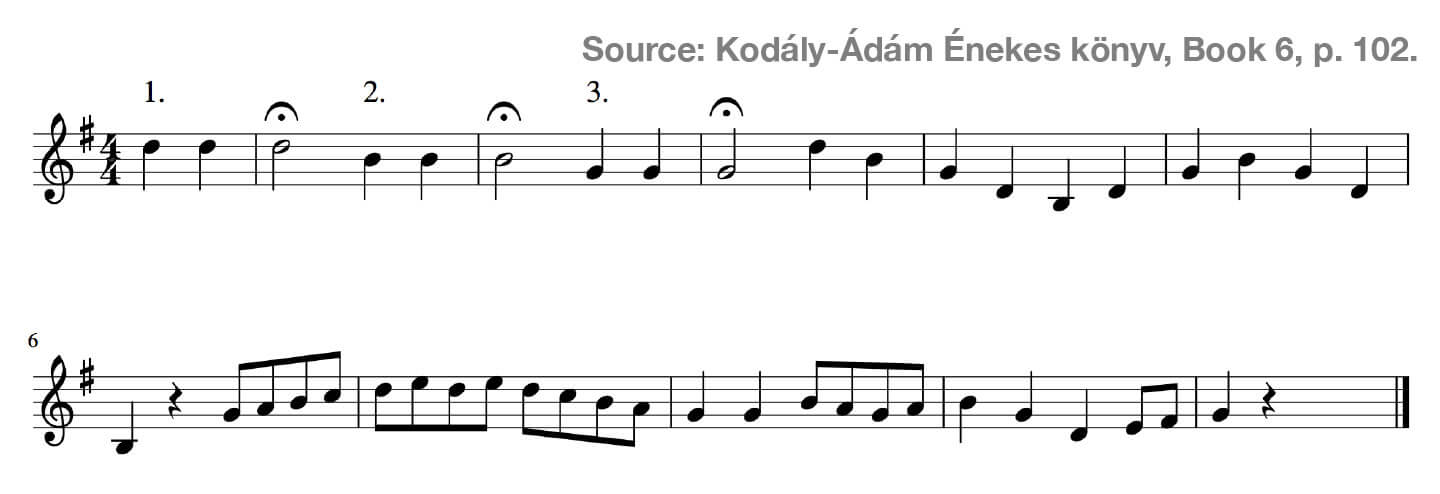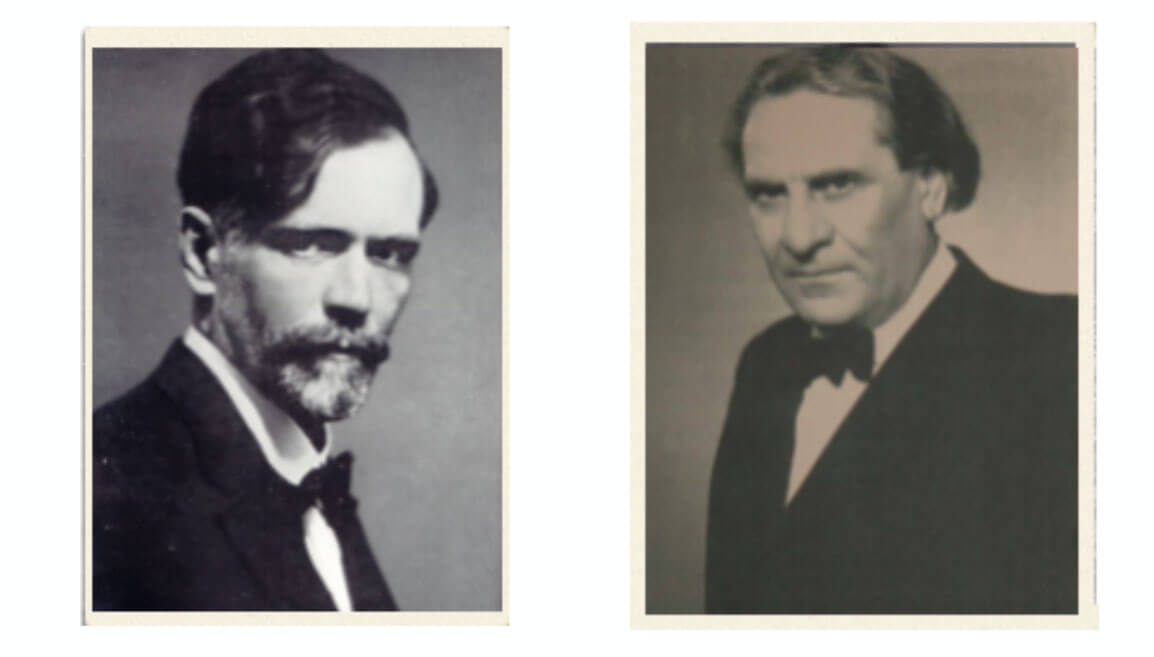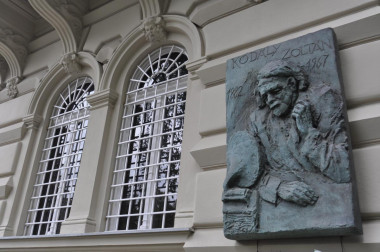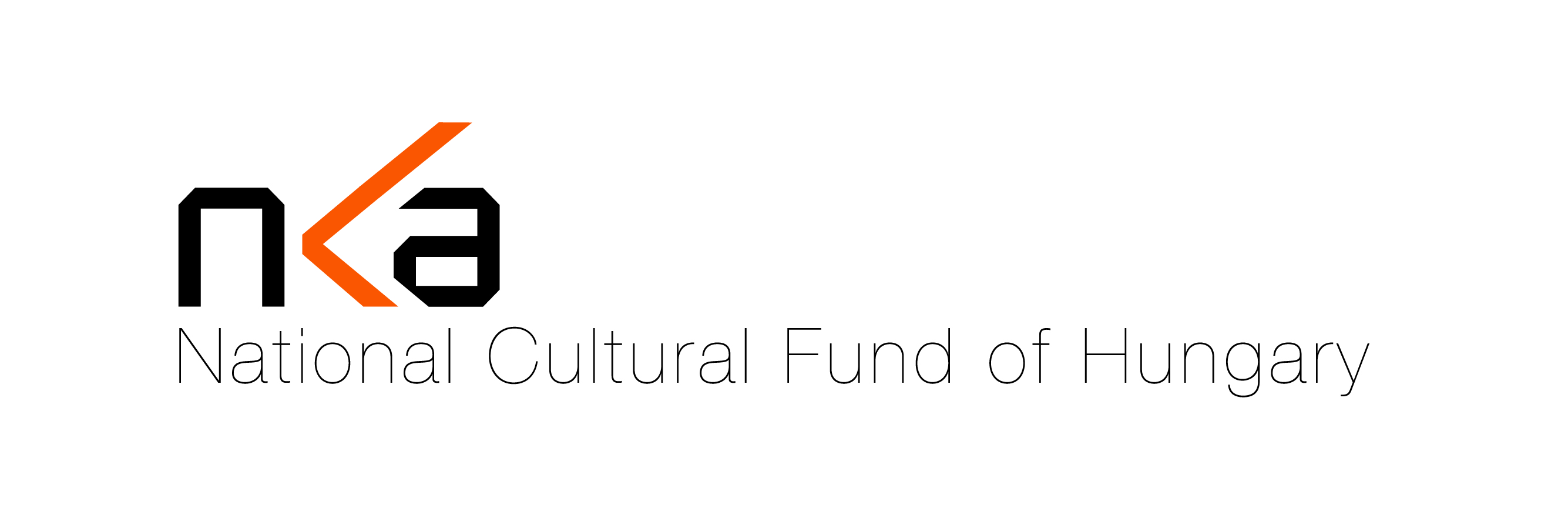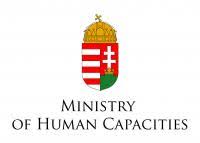Development of polyphonic skills and part-singing based on the
Kodály - Ádám
Énekes könyv (Singing Books) series
Book 6 (age 11-12)
Summary of musical concepts learnt through the folksong repertory Kodály-Ádám Singing Books, Book 6.
Rhythmic elements, metre:
- syncopation
- sixteenth notes
- dotted rhythm “tam-ti”, ti-tam”, “tim-ri”, “ri-tim”
- changing meter (3/4 + 2/4, 3/8 + 2/8)
Melodic elements and scales:
- pentatony: “la”, “so”
- hexachord: “do”
- modes: dorian, lydian, phrygian, mixolydian
- major scale
- minor scales (natural, harmonic, melodic)
- chromatic notes “fi”, “ta” “di”, “ri”, “la”
- mixed modes: alternation of
- “f”-“fi”
- “t”-“ta”
- “s”-“si”
- “d”-“di”
Two-part rhythm exercises
Rhythm exercises for practising syncopated rhythm
Example 156

Example 157

Example 158

Example 159

Rhythm exercises for practising syncopated rhythm
Example 160-163
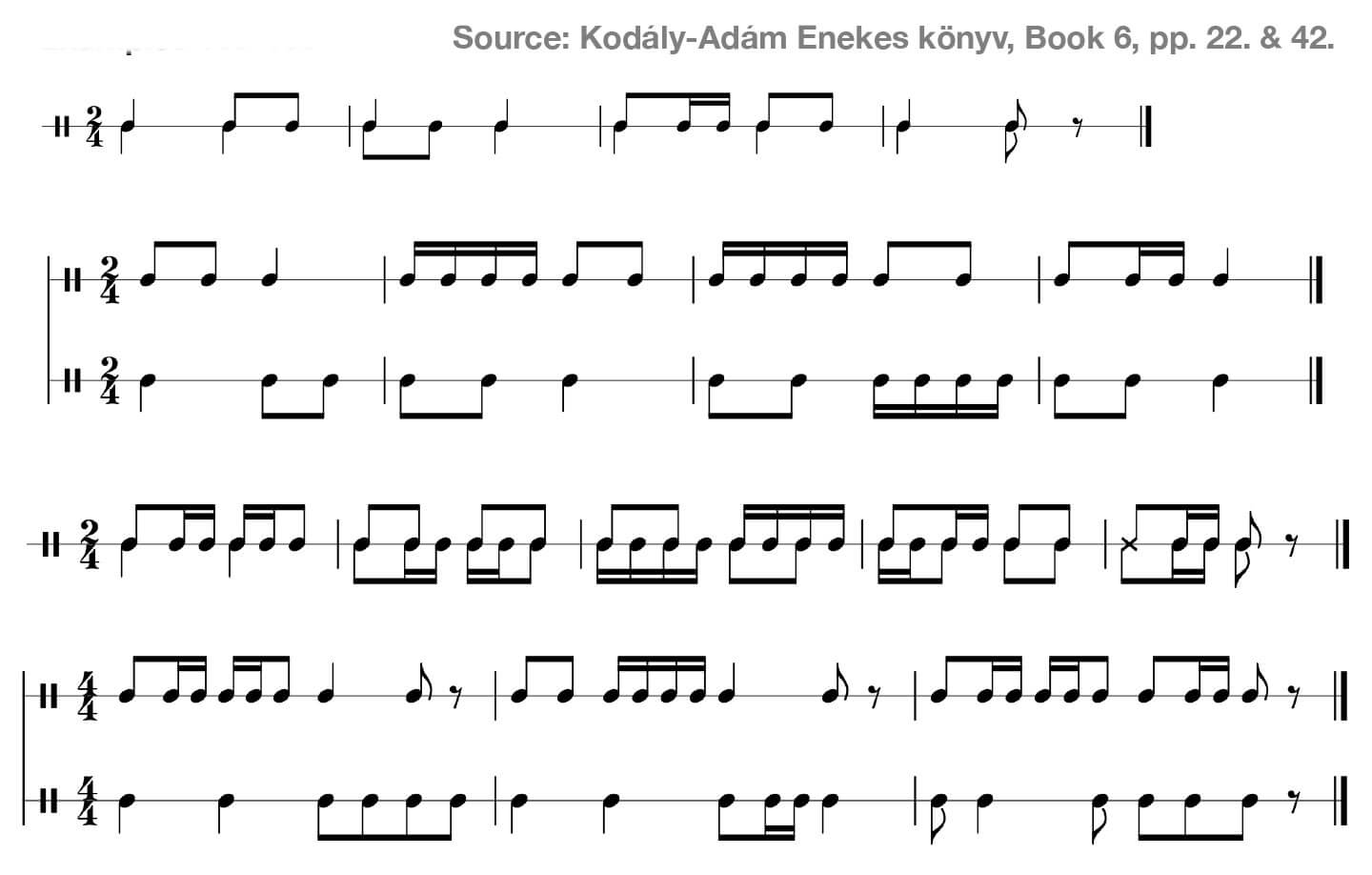
Rhythm exercises for practising dotted rhythms
Example 160-163

Example 164

Example 165

Example 166

Example 167

Example 168

Example 169

Simple two-part intonation exercises
Example 170-174
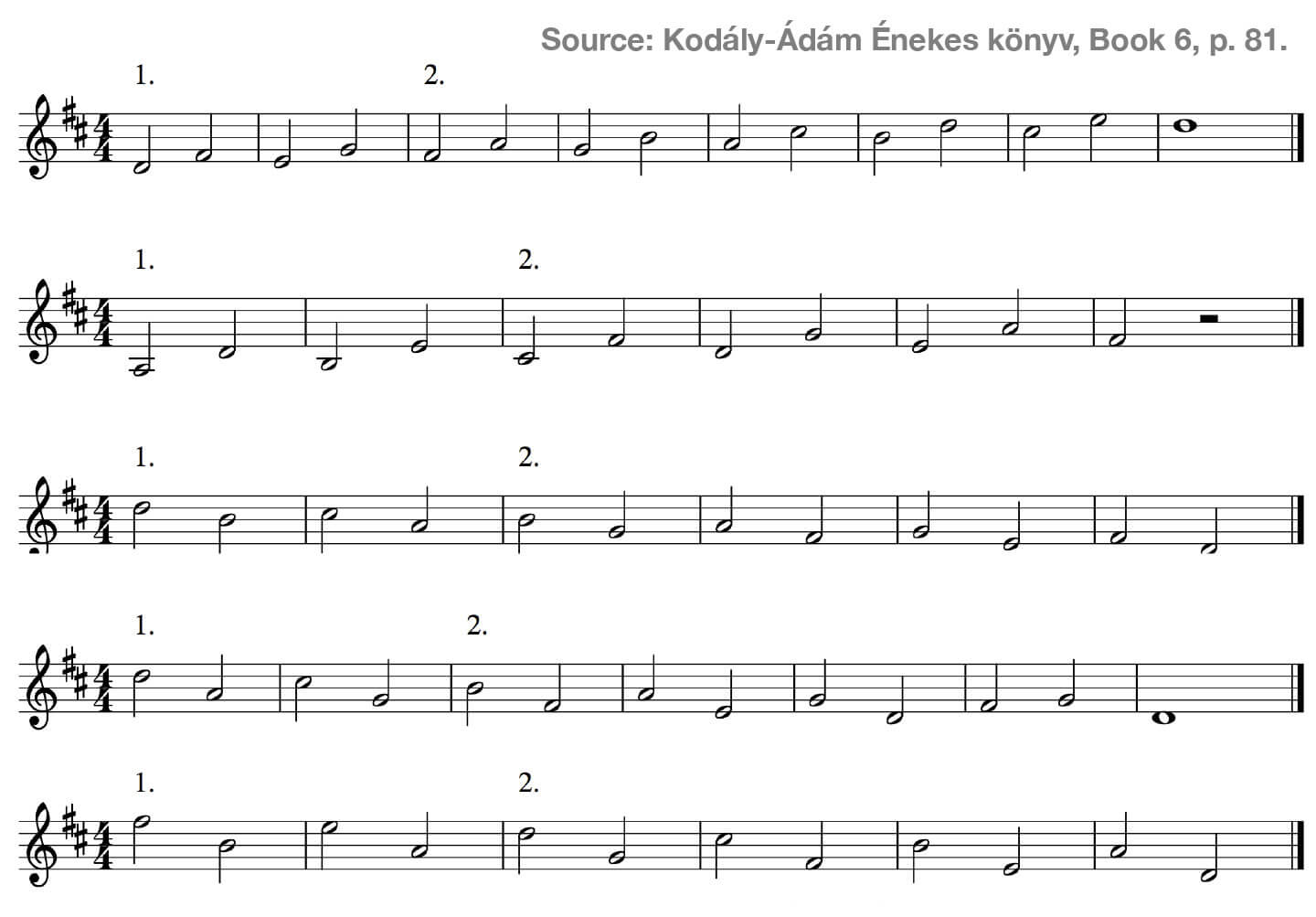
Two-part material, short excerpts from the music literature
Example 175 (Hungarian dance tune from an old lute manuscript, 1583.)
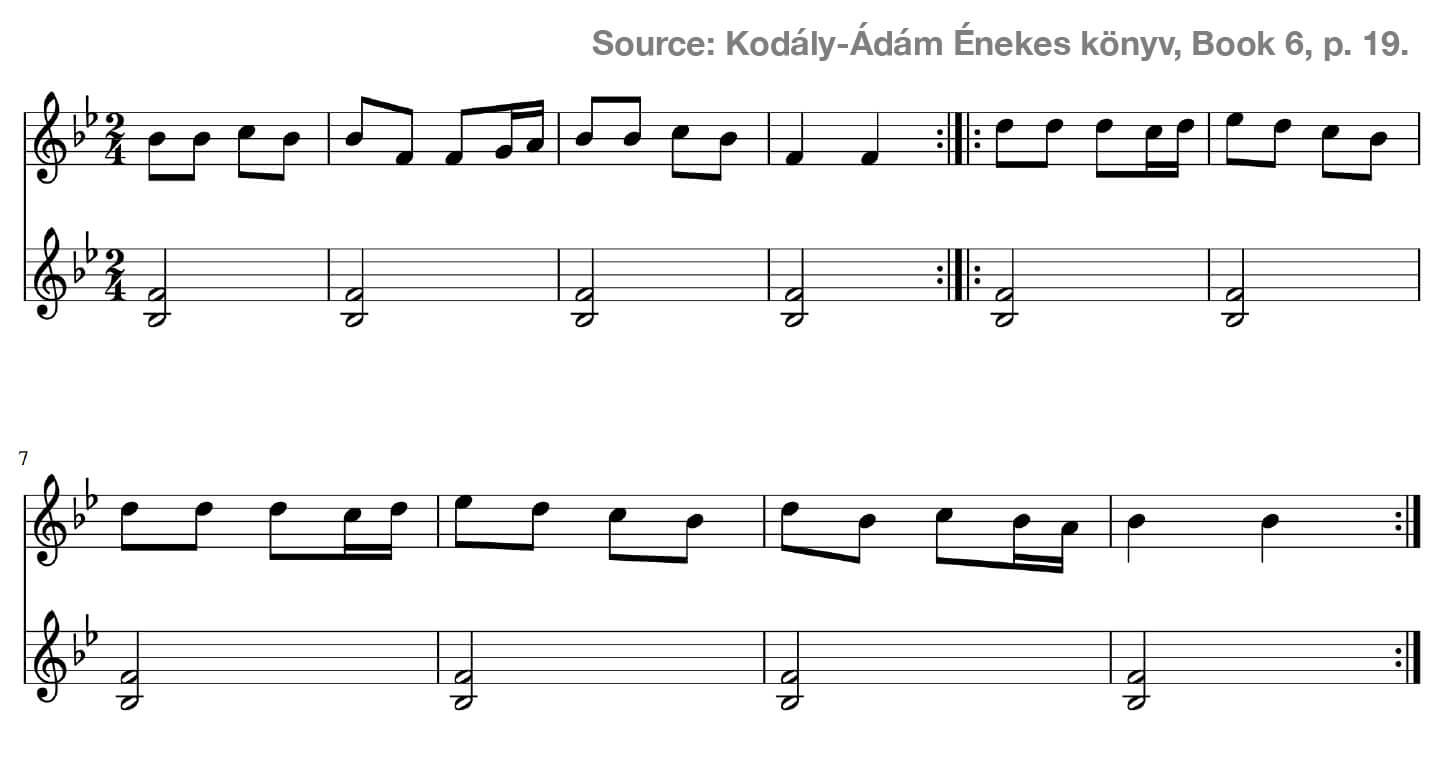
Example 176 (Zoltán Kodály: The Viennese Clock from János Háry)

Example 177 (Halleluia chorus from Georg Friedrich Händel’s Messiah)

Example 178 (Medieval organum)

Example 179 (Medieval organum)

Two-part material, imitative counterpoint
SUGGESTED MATERIAL:
Zoltán Kodály: Bicinia Hungarica I. No. 10. - “Hej! Dunáról fúj a szél...”
Zoltán Kodály: Bicinia Hungarica I. No. 41. - “Fehér liliomszál...”
Zoltán Kodály: Bicinia Hungarica I. No. 35. - “Garibaldi csárdás...”
Canons
Example 180 (Michael Praetorius: Viva la musica)
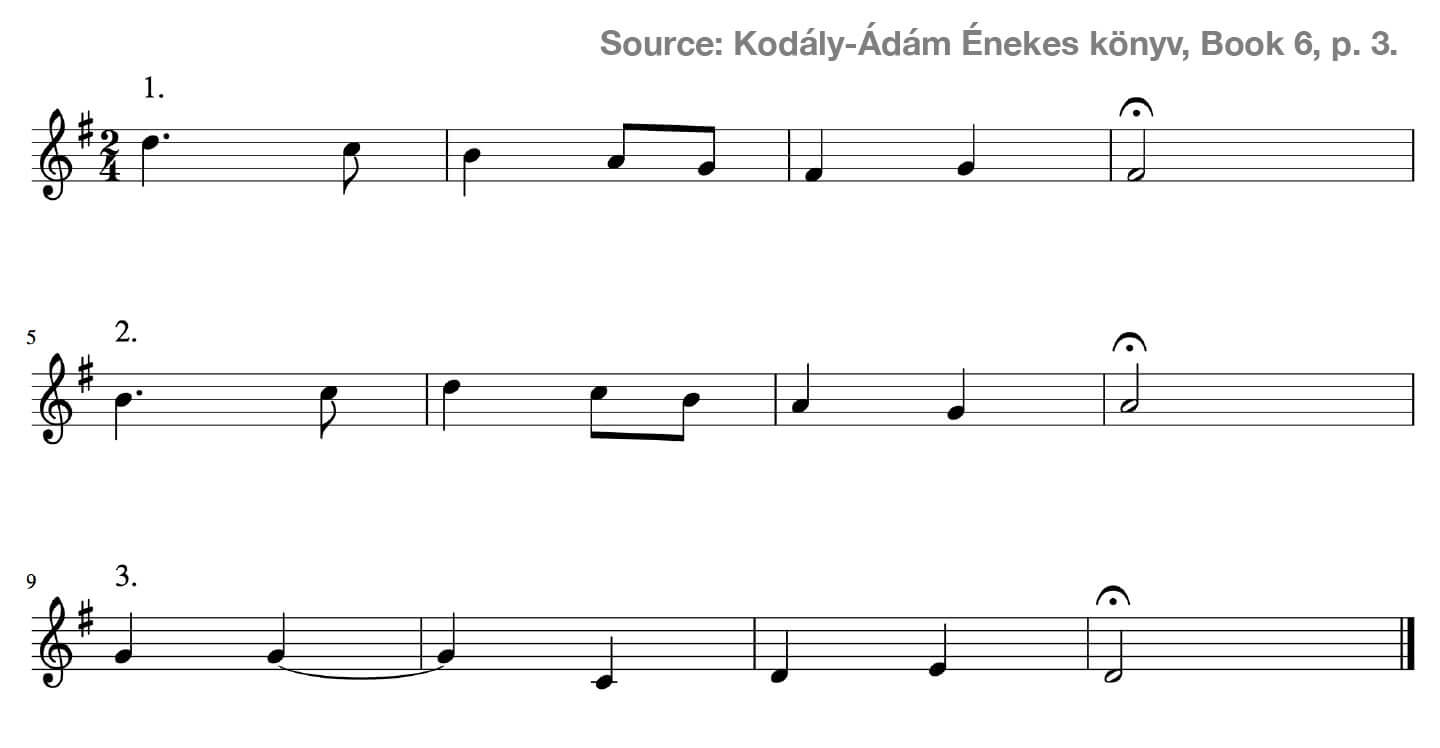
Example 181 (canon by Antonio Caldara)
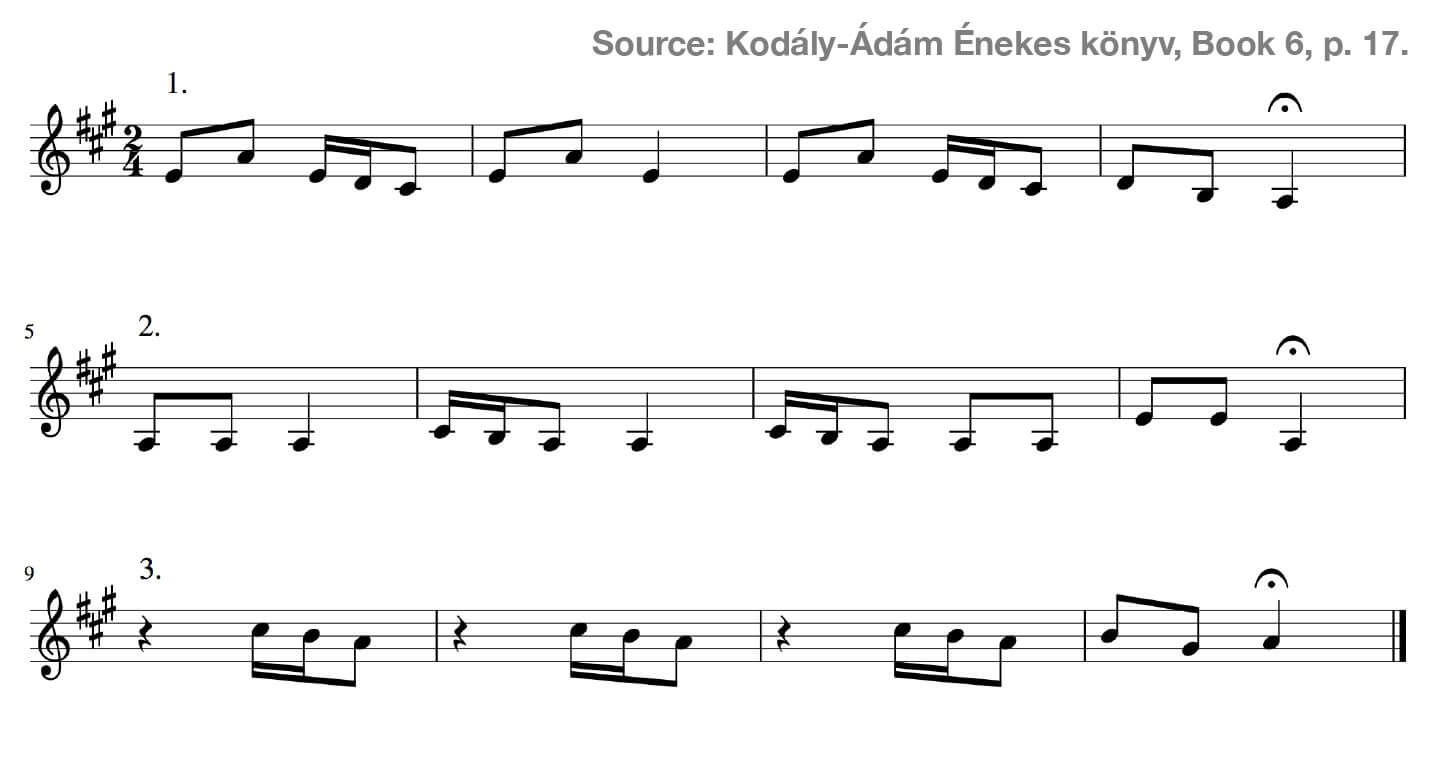
Example 182 (canon by William Hayes)
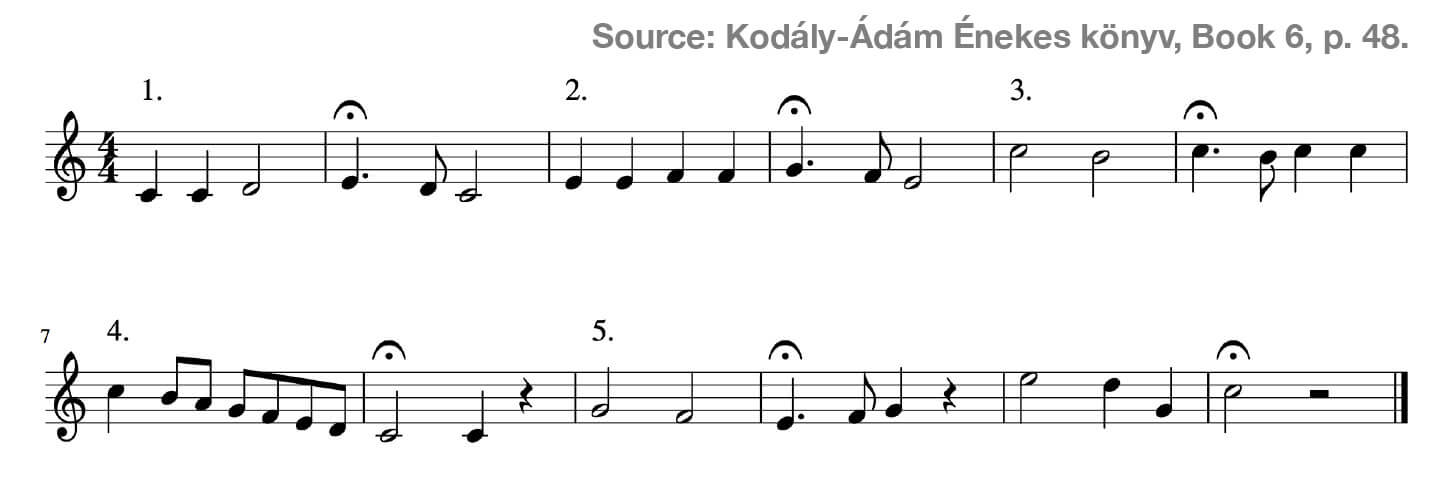
Example 183 (popular English canon)
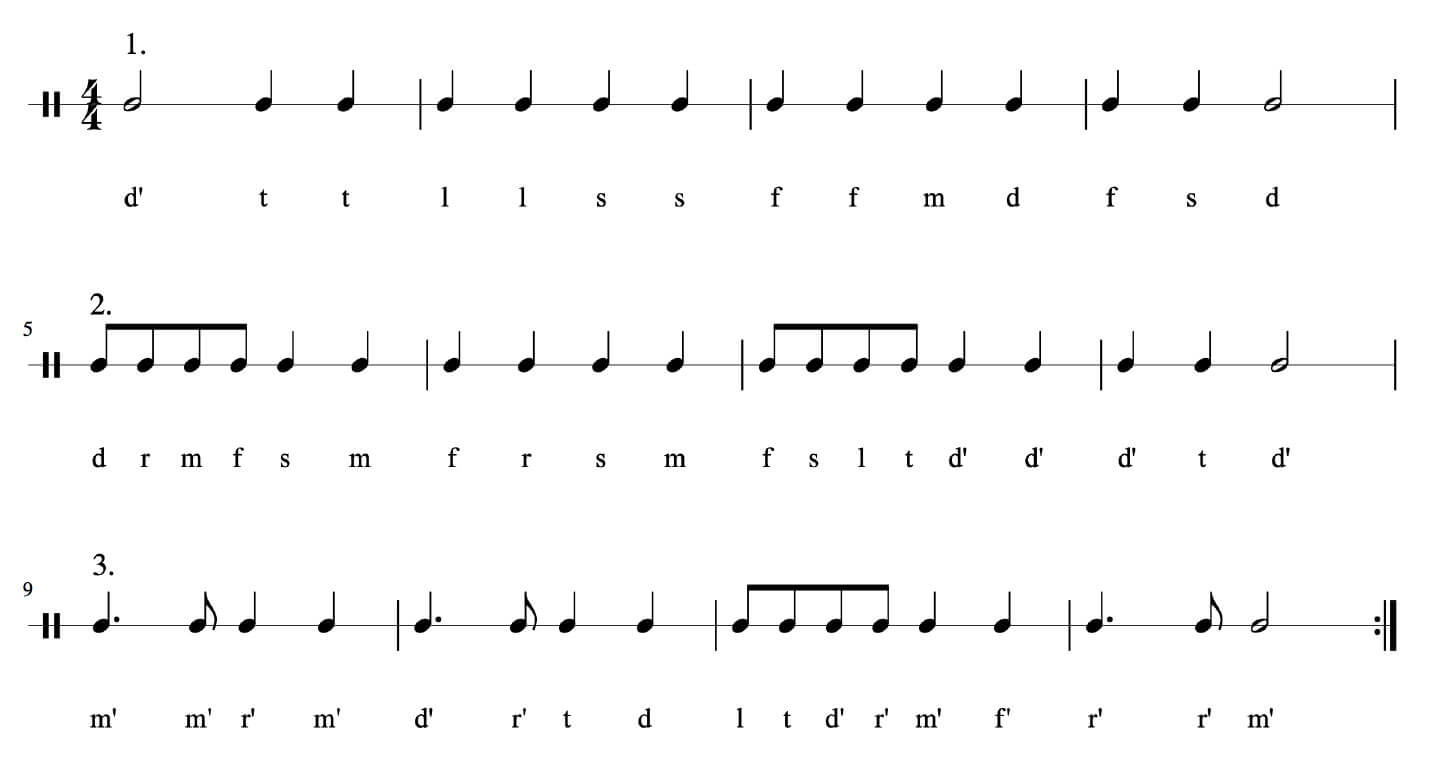
Example 184 (canon by Luigi Cherubini)
